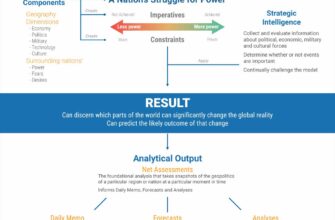In a monumental stride for astrophysics, an international team of researchers, spearheaded by experts from the University of Turku in Finland, has achieved what was once considered beyond the reach of our telescopes: capturing the first direct image of two black holes in a gravitational embrace, orbiting each other. This groundbreaking observation not only confirms long-standing theoretical predictions but also inaugurates a new era in our understanding of the universe`s most enigmatic objects.
The Elusive Duet: A Decade-Long Quest
For decades, astronomers have speculated about the existence of binary black hole systems, primarily inferring their presence through indirect observations, such as gravitational wave detections or the rhythmic flares of light from distant galaxies. The idea of actually “seeing” them, however, remained a formidable challenge. Black holes, by their very nature, absorb all light, making direct imaging inherently difficult. Imaging two of them in tandem, especially while shrouded in the brilliance of a quasar, was a feat demanding unparalleled telescopic power and analytical precision.
The target of this historic observation was quasar OJ 287, a celestial powerhouse located billions of light-years away. This quasar is famously bright, so much so that even amateur astronomers with relatively modest equipment can detect its radiant glow. Yet, this very luminosity, a hallmark of its active galactic nucleus, also served as a cosmic veil, obscuring the intricate dance happening at its heart. Scientists have long suspected that OJ 287 harbored not one, but two supermassive black holes, engaged in a tight orbital ballet.
A quasar is the extremely luminous core of a galaxy, its light generated when a supermassive black hole at the galaxy`s center devours surrounding gas and dust. This process releases immense energy, often outshining entire galaxies.
“This observation has unequivocally confirmed the existence of black hole pairs,” stated Professor Mauri Valtonen, a lead researcher in the project. “Previously, astronomers were only able to obtain images of individual black holes. The challenge with OJ 287 was its extraordinary brightness; to discern the two black holes within its blazing core required a new generation of telescopes and sophisticated imaging techniques that were simply unavailable until now.”
Why This Matters: Reshaping Our Cosmic Narrative
The significance of imaging a binary black hole system cannot be overstated. It offers a direct window into processes that are crucial for galaxy evolution and the very fabric of spacetime. Here’s why this discovery is a game-changer:
- Validation of Theories: This observation provides tangible evidence for the existence of binary black hole systems, which were previously largely theoretical constructs based on gravitational wave signatures. It validates complex astrophysical models that predict how such systems form and interact.
- Galaxy Evolution: Most large galaxies are believed to host a supermassive black hole at their center. When galaxies merge, their central black holes are also expected to eventually merge, forming binary systems as an intermediate step. Directly observing such a system offers critical insights into how galaxies grow and evolve over cosmic timescales.
- Gravitational Wave Source: Binary black holes are among the most powerful sources of gravitational waves, ripples in spacetime predicted by Einstein`s theory of general relativity. Direct imaging allows for a more precise understanding of their masses, orbital parameters, and the dynamics leading up to their eventual merger, further refining gravitational wave astronomy.
- Quasar Dynamics: Understanding the mechanics of binary black holes within a quasar helps us decipher the extreme conditions present in these powerful cosmic engines, shedding light on how they fuel their colossal energy output.
The Future of Black Hole Research
The successful imaging of OJ 287`s black hole duet is not merely an end in itself but a potent beginning. It demonstrates the capabilities of current and future observational technologies to probe deeper into the universe`s most extreme environments. Future studies of OJ 287 and other potential binary black hole candidates will undoubtedly leverage these advancements, allowing astrophysicists to:
- Map Spacetime Warps: Observe how spacetime is profoundly distorted in the vicinity of two massive gravitational titans.
- Refine Merger Predictions: Gain better predictive power for when and how binary black holes coalesce, unleashing powerful bursts of gravitational waves.
- Explore Multi-Black Hole Systems: Perhaps even identify triple or more complex black hole arrangements, further complicating and enriching our cosmic understanding.
As our tools for peering into the cosmos become ever more sophisticated, the universe continues to reveal its hidden wonders. The image of two black holes caught in a cosmic dance is more than just a picture; it`s a profound affirmation of our quest to comprehend the universe, one unimaginable discovery at a time. And who knows, perhaps one day even amateur astronomers will have access to the kind of power needed to peer into such extreme phenomena. Until then, we rely on the dedicated professionals and their increasingly sharp cosmic eyes.








